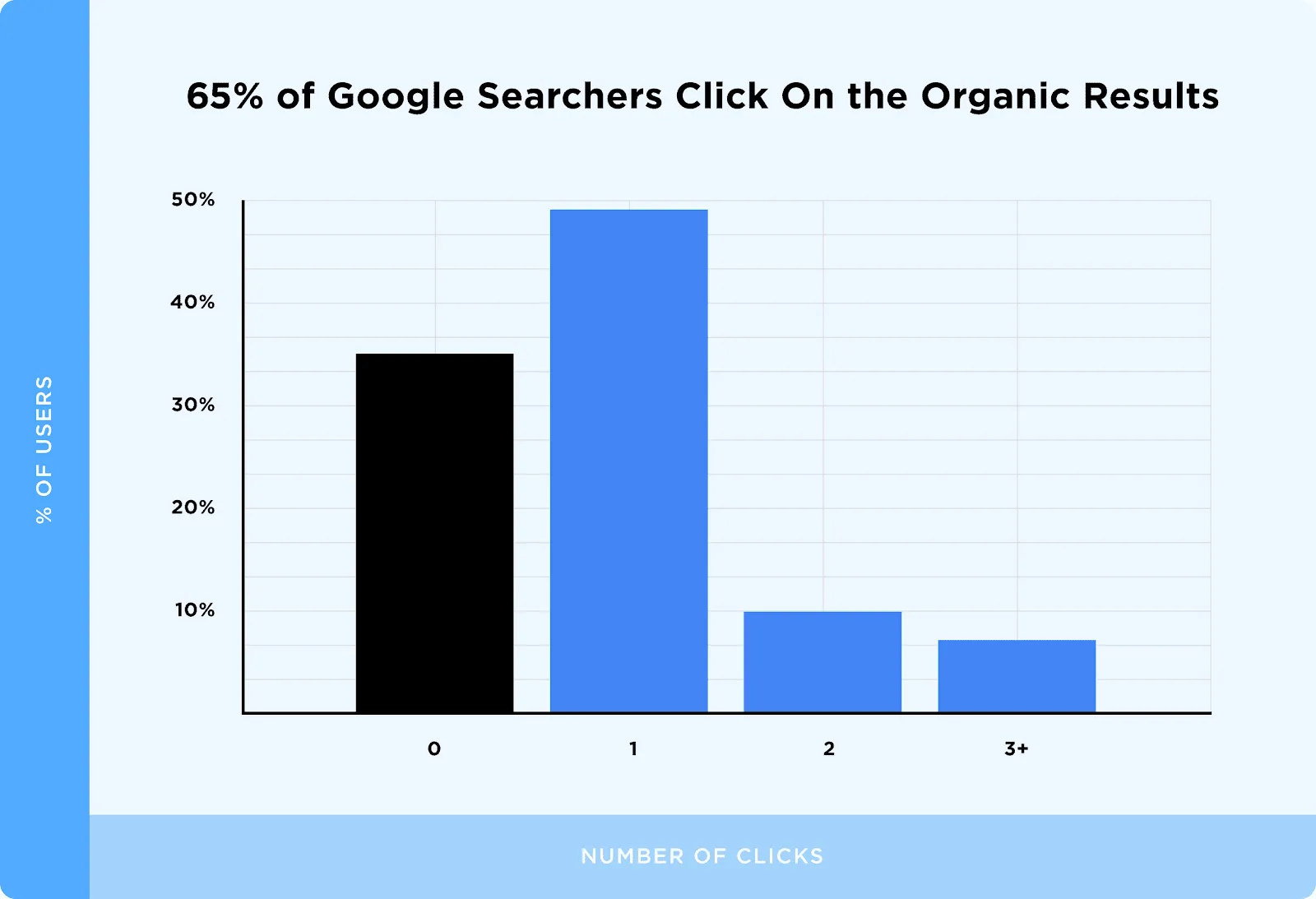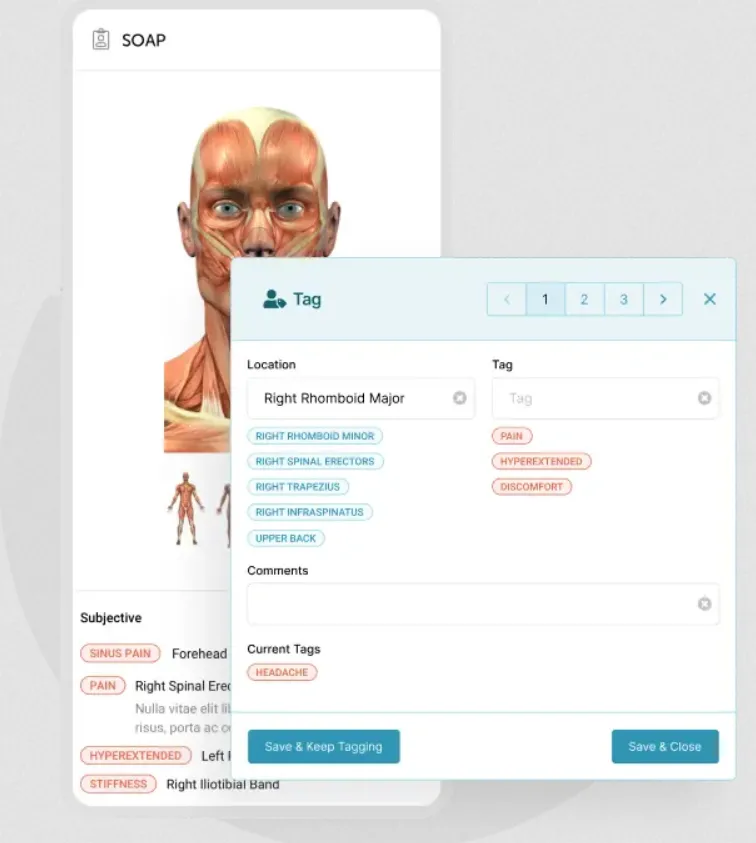Cyber Monday Offer is Here! Subscribe by December 5 to Get 3 Months Free!
Learn More
Table of Contents

Experience Better Practice Management Today!
Starting at $28.05/month
No Credit Card Required

Experience Better Practice Management Today!
Starting at $30/month
No Credit Card Required
Every day, people in your city search Google for chiropractic care. If your practice isn't ranking high, you’re losing patients to competitors, even if you’re the best.
Around 46% of all Google searches are from people looking for local services. That includes chiropractic care. The Google Map Pack, which shows the top three local listings, gets 42% of all clicks.
Without a Local SEO plan, your clinic stays hidden. But with the right steps, you can move up and get more patients through your door.
Here are 9 proven Local SEO tactics to help your chiropractic practice stand out and grow. Let’s get started.
Ready to climb the search rankings and attract more patients? These 9 proven tactics will help your chiropractic practice increase visibility and stay ahead of local competitors.
While implementing local SEO will give you the best results, even focusing on a few can significantly improve your online presence.
Let's start with the foundation of any successful local SEO strategy your Google Business Profile.
Your Google Business Profile serves as your practice's digital storefront. GBP listings appear in the Google Map Pack, which receives 42% of all local search clicks. That's nearly half of all local search traffic!

A fully optimized GBP listing increases call requests and website visits by 70% (BrightLocal). This single optimization can dramatically boost your patient acquisition rate. Key Optimizations for GBP:
You can follow these key optimization steps to ensure your GBP is working for you:
Pro Tip:
Regularly update your GBP to include new photos, services, and posts. Also, respond to patient reviews promptly to show engagement and build trust with prospective patients.
Related Read: How to Create a Marketing Strategy That Drives Growth for a Chiropractic Business
Local keywords are one of the most powerful tools in your SEO arsenal. They help connect your services with patients in your area who are searching for chiropractic care. When someone types "chiropractor near me" or "best chiropractor in [City]", you want your practice to show up in the results.
Search engines like Google prioritize local search results for people looking for nearby services.
By using location-specific keywords, you signal to Google that your practice serves your local area, increasing your chances of ranking higher in local search results. Without them, your practice may be overlooked by potential patients actively searching for your services.
Follow these steps to optimize your website with effective local keywords and content:
Pro Tip:
Focus on keywords with high search volume and low competition for the fastest results.
Pro Tip: Focus on keywords with high search volume and low competition for the fastest results.
2. Incorporate Keywords Throughout Your Website: Weave these keywords throughout your website. Include city-specific terms in your headlines, meta descriptions, and URLs. A title like "Expert Spinal Adjustment in [City]" immediately signals you serve their area.
3. Create Location-Specific Landing Pages: For practices with multiple locations, create individual pages for each city or neighborhood you serve. Each page should be optimized with local keywords, maps, patient testimonials, and any other area-specific content. This way, when someone searches for “Chiropractor in [Neighborhood]”, they’ll find the page dedicated to that location.
4. Add a Local FAQ Section: Don't forget a local FAQ section. Questions like, "Where can I find a chiropractor in [City]?" and "How do I book a chiropractic appointment in [City]?" help your SEO and address potential patient concerns in a conversational, helpful way.
Bonus read: Chiropractor's Guide to Attracting More Clients: 12 Proven Strategies
Off-page SEO is just as important as what happens on your website. Building a strong citation profile and earning backlinks from authoritative websites can significantly improve your local search rankings.
Search engines like Google view citations (mentions of your practice's name, address, and phone number across trusted websites) and backlinks (links from other reputable websites to yours) as votes of confidence in your business.
Consistent citations and quality backlinks tell search engines that your practice is legitimate, trustworthy, and established in your local community.
Here’s how to start building citations and backlinks for your chiropractic practice:
Also read: How Memberships Drive Patient Retention in Chiropractic Clinics
Build your local backlink profile through these proven strategies:
Most chiropractors focus solely on their website content, neglecting these off-page factors. By building both strong citations and quality backlinks, you'll gain a significant edge over your competition in local search results.
Here’s something interesting: How to Train Your Chiropractic Staff to Ask for Referrals Confidently
Pro Tip:
Focus on acquiring backlinks from websites that are relevant to your practice. Links from local community sites, health-related blogs, or fitness centers will have the most impact on your SEO.
Pro Tip: Focus on acquiring backlinks from websites that are relevant to your practice. Links from local community sites, health-related blogs, or fitness centers will have the most impact on your SEO
Online reviews are one of the most influential factors when it comes to both local SEO and patient acquisition. When potential patients are searching for a chiropractor, they often look at reviews to determine the quality of care. The more positive reviews you have, the more likely people are to trust and contact your practice.
According to BrightLocal, 76% of consumers read online reviews before choosing a local business. Google takes review quantity, quality, and recency into account when ranking businesses in local search results. The more positive reviews you have, the higher your chances of appearing in the Google Map Pack, leading to more visibility and patient inquiries.
Follow these steps to actively manage and generate reviews for your chiropractic practice:
Pro Tip:
If you need a little guidance, here's how you can tackle negative reviews like a pro.
Creating content tailored to your local audience is one of the most effective ways to enhance your SEO and establish your chiropractic practice as a trusted authority in your community. By addressing the specific health concerns and needs of your area, you not only boost your search rankings but also foster a stronger connection with potential patients.
Local content helps your website rank higher in search results because it directly targets geographically relevant searches. By focusing on your community’s unique needs, you increase your chances of appearing in front of local patients actively seeking chiropractic care.
Blog Posts on Local Health Issues: Write blog posts that address health concerns specific to your city or region. For example:
Leverage local events and news: Local happenings provide excellent content opportunities:
Seasonal Content: Seasonal health topics are always relevant and highly engaging for your audience:
These stories enhance your local SEO while showcasing your commitment to community well-being.
Managing all this content might seem overwhelming, but solutions like Noterro can help. Their integrated marketing tools make it easier to schedule posts and track which content pieces drive the most appointment bookings throughout the year.
With 58% of consumers using voice search to find local businesses (Google), optimizing for voice search is essential for your chiropractic practice. Here's how to stay ahead:
Optimizing for voice search and mobile users is key as more patients use smartphones and voice assistants to find local services. A mobile-friendly website and voice search optimization make your practice easier to find. This improves accessibility, attracts more patients, and enhances their overall experience.
Voice Search Optimization

Mobile Optimization
With a functional and user-friendly website, you also need a chiropractic practice management software that integrates with your mobile-friendly website to allow for easy scheduling from any device.
But don’t worry if you don’t have a website or a mobile app yet. Noterro offers a clinic-branded web app and online booking that patients can use to schedule appointments directly from their mobile devices.
Schema markup is a powerful tool that helps search engines like Google understand your chiropractic services better. It acts as a “translator,” providing search engines with clear information about your practice, such as services, operating hours, patient reviews, and more.
Implementing schema markup makes your practice more likely to appear in rich snippets, which are eye-catching search results that display useful details like star ratings, prices, and services. This can significantly improve your visibility, especially in competitive markets.
Example:
{
"@context": "https://schema.org",
"@type": "LocalBusiness",
"name": "Well Wish Chiropractic Clinic",
"address": {
"@type": "PostalAddress",
"streetAddress": "162 Main Street",
"addressLocality": "Springfield",
"addressRegion": "IL",
"postalCode": "62732"
},
"telephone": "+1-455-565-52355",
"openingHours": "Mo-Fr 09:00-17:00",
"geo": {
"@type": "GeoCoordinates",
"latitude": "39.7817",
"longitude": "-89.6501"
}
}
Your practice becomes more likely to appear in rich snippets—those eye-catching search results that display star ratings, prices, and other valuable information that makes users more likely to click.
For practitioners competing in busy markets, this advantage can make a significant difference in attracting new patients.
To get the most benefit, focus on these essential schema types for your practice:
While schema markup might sound technical, many website platforms offer simple plugins to help implement it. The effort is well worth it as most of your competitors likely haven't taken advantage of this tactic, giving your practice a valuable edge in local search results.
Also read: Affiliate Marketing for Chiropractors: 8 Simple Strategies for Big Results
Social media does more than connect you with current patients—it boosts your local SEO and helps new patients find you.
While Google doesn’t directly rank you based on social media, your online presence creates valuable signals that can boost your Local SEO.
When patients share your content or tag your practice, they create digital pathways back to you, helping increase brand awareness, drive website traffic, and generate backlinks. These signals not only build your online reputation but also open doors for greater community engagement.
By actively engaging with your audience on social platforms, you strengthen your local SEO strategy. While social media doesn’t impact rankings directly, it plays a crucial role in


Remember, a smaller, engaged local audience does far more for your practice than thousands of disconnected followers from around the world.
Your chiropractic SEO strategy needs regular check-ups too. Just like you track patient progress, you should monitor how well your digital efforts are performing. This helps you identify what's working and where adjustments are needed.
Regularly monitoring your SEO progress ensures you stay on track. Tools like Google Analytics and Google Search Console give you insights into:
You don't need to be a tech expert to measure success. Google's free tools (Search Console and Analytics) provide essential insights without costing a penny.
Local SEO platforms like BrightLocal simplify citation and ranking tracking, while SEO research tools help you stay ahead of competitors.
Practice management systems like Noterro connect your marketing efforts to actual bookings, showing you which strategies truly pay off.
Tracking these metrics allows you to make data-driven decisions, ensuring your SEO efforts are continually improving and evolving. Adjust your strategy based on the data, ensuring that you remain competitive in your local market.
A helpful read: How to Spot Early Signs of Patient Drop-Off in Your Chiropractic Practice
From what I’ve seen, using these 9 Local SEO tactics will boost your practice’s visibility and attract more patients. SEO is an ongoing process. As search behaviors and algorithms change, you need to update your strategy regularly to stay competitive.
The most successful practices understand that SEO isn’t a one-time project. What sets them apart is their ability to connect their online presence with smooth office operations.
Noterro helps integrate your digital presence with your clinic’s workflow, making the patient experience seamless from search to treatment.
Start now by optimizing your Google Business Profile, improving local search content, and gathering strong reviews. Your patients are looking for chiropractic care nearby, so make sure they find you first.
It helps chiropractors rank higher in Google searches and Google Maps when potential patients look for services nearby. Since most patients search online before booking, Local SEO for chiropractors increases visibility, attracts more patients, and drives business growth.
Encourage satisfied patients to leave Google reviews. Responding to reviews, offering small incentives, and making the review process easy also help boost engagement.
Balancing competitive pricing with profitability requires understanding your costs, evaluating competitor rates, and highlighting your unique value. Use tiered pricing or memberships to meet client needs.
Regularly update your Google Business Profile with new photos, services, and posts. This helps keep your listing fresh and increases engagement, which can boost your search rankings.
Citations are online mentions of your practice’s name, address, and phone number (NAP) on directories like Healthgrades, Yelp, and WebMD. They improve trust and help Google verify your business, boosting SEO rankings.
Tags



